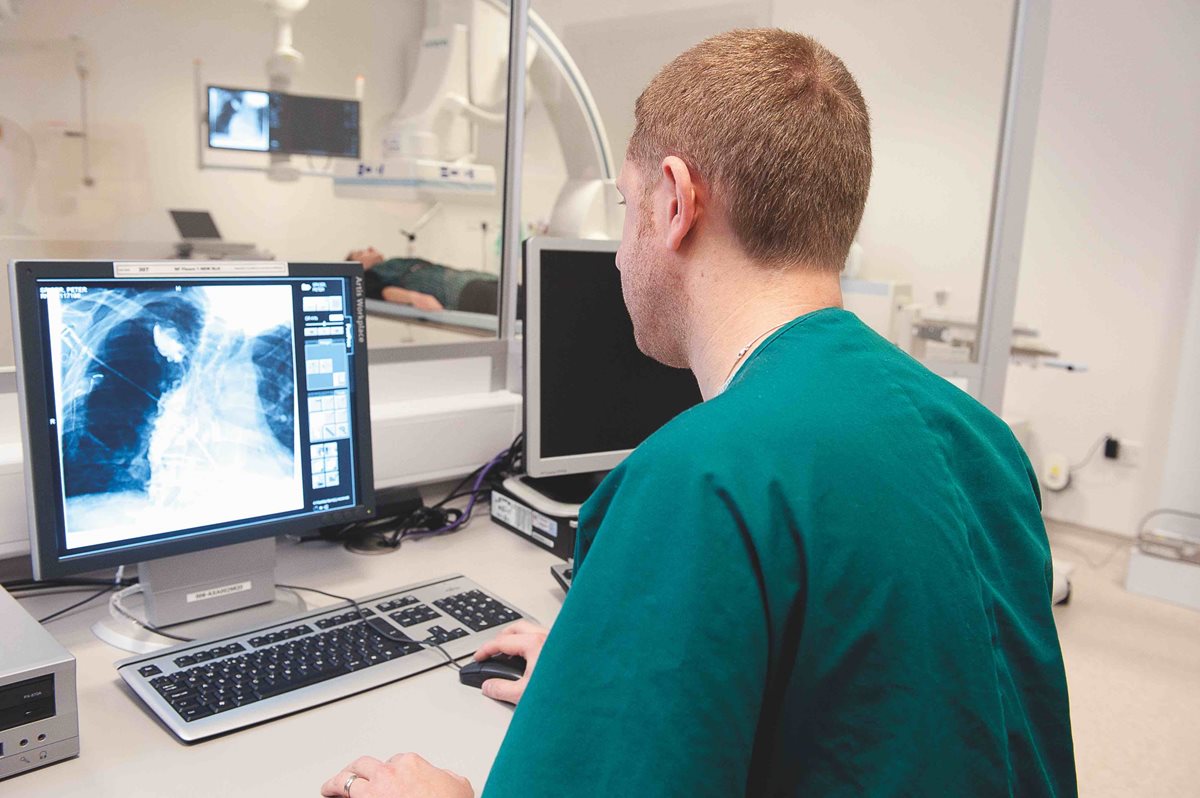There is still a serious shortage of diagnostic radiographers across the UK, according to the Diagnostic Radiography UK Workforce Report 2017, with the average current radiography vacancy rate calculated as: England 10%, Northern Ireland 5%, Scotland 7% and Wales 9%.
The report is based on the annual Society and College of Radiographers’ UK-wide diagnostic radiography workforce census sent to all UK clinical imaging managers at the end of last year.
Serious training funding issues, not training enough radiographers and the need to change the overall approach to training in core skills were cited by respondents, as well as the difficulty in recruiting and retaining new graduates, and the number of qualified radiographers who are expected to retire within the next two years .
‘Clinical imaging is integral to almost all pathways of care; as both part of informing the diagnosis and in monitoring outcomes to treatment. Timely imaging and reporting is, therefore, essential in delivering efficient patient pathways, and supporting the goal of improving outcomes for patients. Sufficient workforce is required to support this goal’ quotes the report.
‘More diagnostic radiographers will be required to image patients and at advanced practitioner level contribute to the interpretation / reporting of imaging studies that are part of the diagnostic pathway of care. Nearly three quarters of departments indicate that they have used agency staff to fill the gaps. Positively, reductions in the three month vacancy rate and long term absence rate are seen.’
‘We urge service leaders to work with key stakeholders to develop clear plans to support the growth of the workforce to meet the population’s needs at the local level; this should include optimising skills mix with both implementation of assistant practitioner support workforce and investment in advanced and consultant practice to support service innovation in order to maximise capacity and capability.
Summary of the results
- The average number of diagnostic radiography establishment staff by whole time equivalent (WTE) per respondent is 91.
- The average current vacancy rate across all respondents is 9.1% at the census date of 1 November 2017. This compares to an average vacancy rate of 7.8% in the September 2014 census and an average vacancy rate of 13.1% in the May 2016 census. These differences in vacancy rate may be due in part to the different times of year at which the censuses were carried out.
- The average current vacancy rate varies by UK country: England 10%, Northern Ireland 5%, Scotland 7% and Wales 9%.
- The average three-month vacancy rate across all respondents is 6.1%.
- The average percentage of the respondents’ establishment headcount on long term absence is 3.4% (comprising 0.4% on a career break; 1.3% on long term sickness absence and 1.7% on parental leave).
- 4.3% of respondents’ diagnostic radiographic workers are due to retire in the next two years.
- On average, each respondent has 5.2 members of staff (WTE) in postgraduate training in MRI, CT, ultrasound, breast or reporting.
- 73% of respondents use either diagnostic radiography or sonography agency staff (or both).
- There is an average of 1.6 clinical staff band 5 (or equivalent) and above (headcount) per respondent not registered with the Health and Care Professions Council (HCPC).
- 97% of radiographers (by headcount) at the responding providers are from the UK.
- On average, each respondent has 13.9 radiographers, sonographers and/or nuclear technologists (headcount) carrying out advanced practice and 0.7 carrying out consultant-level practice as of the census date 1 November 2017.
- The main reasons respondents give for radiographers leaving their posts are personal reasons, retirement and promotion in other centre.
The 2018 census will be emailed to managers on 13th November.
